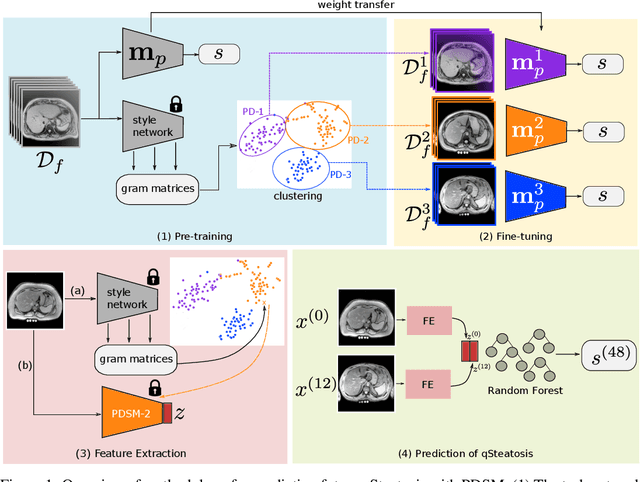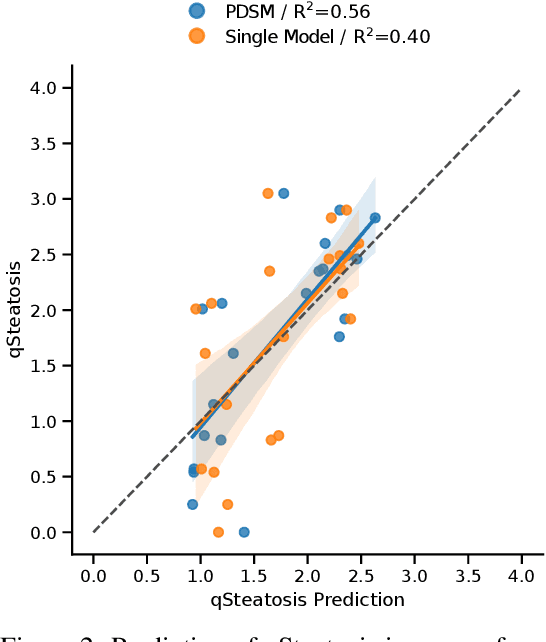Get our free extension to see links to code for papers anywhere online!Free add-on: code for papers everywhere!Free add-on: See code for papers anywhere!
Miljen Martic
Pseudo-domains in imaging data improve prediction of future disease status in multi-center studies
Nov 15, 2021Authors:Matthias Perkonigg, Peter Mesenbrink, Alexander Goehler, Miljen Martic, Ahmed Ba-Ssalamah, Georg Langs
Figures and Tables:



Abstract:In multi-center randomized clinical trials imaging data can be diverse due to acquisition technology or scanning protocols. Models predicting future outcome of patients are impaired by this data heterogeneity. Here, we propose a prediction method that can cope with a high number of different scanning sites and a low number of samples per site. We cluster sites into pseudo-domains based on visual appearance of scans, and train pseudo-domain specific models. Results show that they improve the prediction accuracy for steatosis after 48 weeks from imaging data acquired at an initial visit and 12-weeks follow-up in liver disease
* Accepted at Medical Imaging Meets NeurIPS 2021
Via
 Add to Chrome
Add to Chrome Add to Firefox
Add to Firefox Add to Edge
Add to Edge